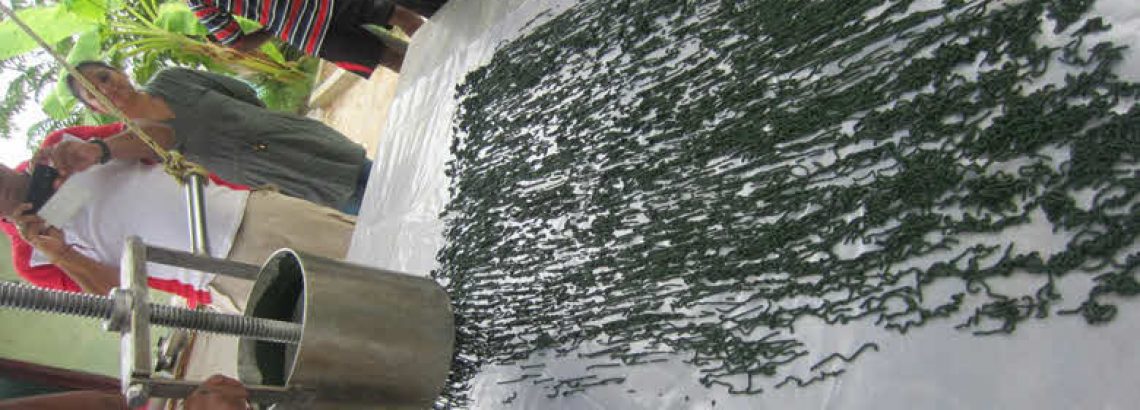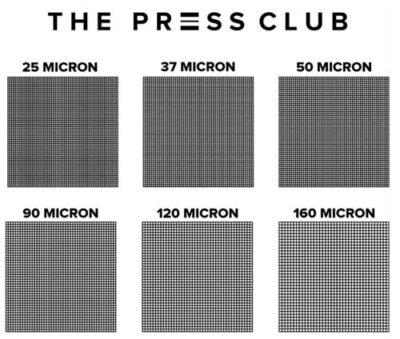Last updated on June 13th, 2023
Harvesting spirulina is a delicate process that requires attention, precision and above all, hygiene. Preferably, it should be done with minimum human intervention, to avoid contamination. While there are many ways to harvest and dry the fresh spirulina biomass, it is essential that you use proper harvesting equipment. In this article, we’ve gone over four pieces of harvesting gear which we found to be extremely useful in a small scale spirulina production environments, such as your home, lab or microfarm setup.
Checking Your Samples
Before doing anything, its very important to make sure that your Spirulina is indeed safe to use. We’re not going go into detail about the types of contamination that can occur when spirulina isn’t maintained correctly, but let’s just say its good to see things with your own eyes. Looking at your samples under a microscope, you should be able to see spirals and nothing else. If any other organism is present in the sample, it means that your batch has been contaminated and should be pre-filtered or re-inoculated.
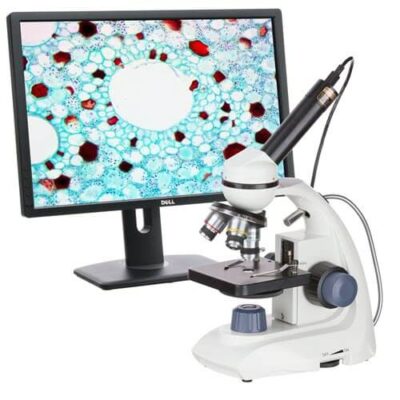
Filtering Spirulina Through a Harvesting Mesh
On the first stage of harvesting spirulina, a tight nylon filter of 30 microns is used to separate the biomass of spirulina from the liquid culture. To do that, many spirulina producers choose to attach the mesh to a wooden frame above their pond and rake the liquids through the framed filter until a thick green paste is formed on the top.
The Nylon fibers of the harvesting filter ensure that no liquids are absorbed in the fabric, and the tight density enables you to collect the fresh biomass while leaving some of the culture to reproduce after the harvest is complete.
If you find that the 30-micron mesh isn’t sufficient, it may be the case that your Spirulina cells, AKA coils, have gone from curly to straight, and are passing through the filter too easily. While not ideal, you should still be able to harvest your spirulina with a tighter, 50 microns filter.
If you’re on a low budget, you can still find good quality filters for a much lower price, like the ones by Chemistry hippy.

Mesh Vs. Microns
Choosing the right filter can be confusing if you’re not familiar with the terminology. Filter size is sometimes rated in U.S. Mesh instead of microns. While U.S. Mesh represents the number of wires (or threads) per linear inch, Microns represent the size of the holes. Basically, the higher the Mesh, the lower the Microns. Use the table below to help you determine the density of your filter.

To visualize the numbers, here’s what different filter sizes look like:
Other Filtering Techniques
There are many different techniques for filtering the biomass. Many of them use vibration or air insertion to prevent the harvested biomass from blocking the filter, such as this example:
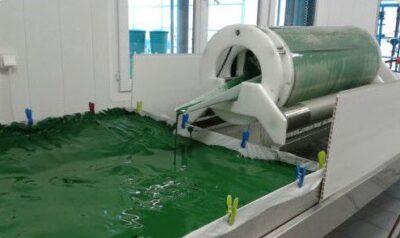
The fresh biomass should be washed and drained at least 2 more times before finally squeezing out all the excess water and heading over to the drying/ preserving process. This will reduce the pH to a more human friendly level as well as remove the salty taste to some extent. Most importantly, it will help to remove excess nutrients from the product.
While home growers can easily do with a bucket and filtering clots, new technologies are now being applied in larger scale operations to quickly extract the fresh spirulina biomass out of the water. Here’s one example from italian manufacturer Virto-Cuccolini:
Weighing Your Spirulina Harvest
There are two reasons why you’d want to weigh your product right after the harvest. The obvious one is of course, that you want to know how much you’ve harvested. But more importantly, the weight of your harvest will determine how much to feed your spirulina culture so that it grows back again.
The weighing of spirulina is done twice. The first time, as mentioned above, is right after the harvest, when the biomass is squeezed of water but still relatively wet. And the second time is after the drying process is complete. This way, you can find out the level of humidity inside the product and see the difference in weight.
There are many types of scales on the market. If you’re a home grower, a simple kitchen scale with 0.01 accuracy will do the trick. If you’re growing spirulina on a larger scale, or if you want to get higher accuracy, auto calibration and other measuring features, you can go for a more professional scale like this one.

Making Sun-Dried Spirulina Crunchies
After harvesting, there are several ways to preserve the spirulina. One of them is, of course, freezing it, which is considered to be the best at preserving spirulina nutrients. However, if you need to ensure shelf life, drying the spirulina seems to be the most effective method. While commercial producers may prefer to use a spray dryer for a faster, cleaner process, home growers will find joy in sun drying, which is easier and a lot more energy efficient.
One of our favorite tools to produce sun-dried spirulina is the spaghetti maker because It’s such a simple tool that can be found just about anywhere.

Simply insert the freshly squeezed spirulina biomass into the spaghetti maker and press the noodles out onto a drying mesh. Depending on the amount of harvest you have, you might want to consider these clothes drying racks, which, surprisingly, as perfect for drying spirulina at home. A basic structure like the one below is easy to find and relatively cheap, though more advanced models are available for industrial producers.
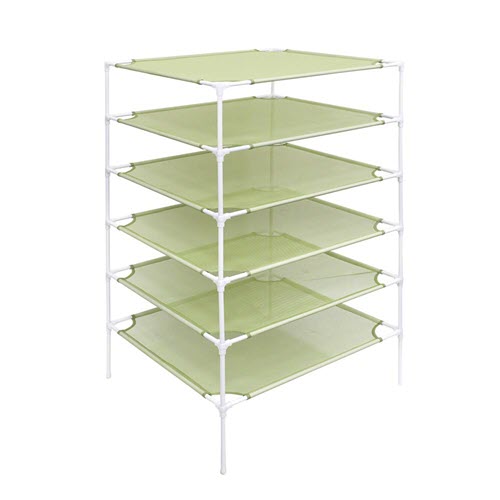

Despite the name of this method, it’s actually better to dry spirulina in the shade or even indoors, if the weather allows it, as direct sunlight could harm the pigments which are so valuable to our health. To speed up this process, you can use an electric food dehydrator like this one:
Summary
There are many ways to harvest and preserve spirulina. In this guide, we’ve included a few of them to give you a taste of what harvesting spirulina is all about, as well as a few of the tools that we like to use as small scale growers. Think we missed something? Got a better idea? Let us know in the comments below.
Happy Harvesting!
Don’t forget: Feed your spirulina after each harvest!
Unsure about ingredient quantities? Purchase our calculator for accurate measurements.


